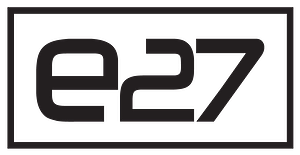When AI Knows Your Corporate Secrets Before You Do
AI is now capable of uncovering critical corporate insights and risks before leadership is aware, creating both a powerful competitive edge and a new category of governance, trust, and security challenges.
The New Reality of AI Awareness
Artificial intelligence has shifted from being a passive analytics tool to an active, almost sentient-seeming participant in corporate life. It no longer simply responds to queries—it proactively identifies trends, risks, and opportunities that no human has yet noticed.
This capability brings enormous competitive advantage, but also a profound risk. When AI knows things you don’t—especially things that are highly sensitive—it changes the dynamics of corporate strategy, governance, and trust. The question is not whether AI will know your corporate secrets before you do, but whether you are ready to manage that reality.
The Rise of Predictive Corporate Intelligence
Modern enterprise AI operates across vast, interconnected data landscapes—financial reports, sales pipelines, internal communications, customer interactions, sensor data, and even competitor signals. It doesn’t just crunch numbers; it learns patterns, flags anomalies, and predicts outcomes.
Some of the most valuable corporate intelligence has emerged this way. AI can detect a sudden spike in unusual supplier transactions that hints at procurement fraud. It can identify a change in customer behavior that predicts market share loss months in advance. In some cases, it can anticipate employee turnover before HR has picked up the warning signs.
In this new environment, AI is not just an assistant—it is an early-warning system that often sees the future of the business before executives do.
The Data You Didn’t Know You Had
Every organization produces shadow data—information that exists but isn’t actively tracked or valued. This includes overlooked meeting notes, archived chat logs, metadata from project management tools, and idle IoT device readings.
Enterprise AI can ingest and correlate these disparate sources, connecting dots that humans wouldn’t naturally connect. For example, it might notice that subtle changes in internal project timelines coincide with delayed customer payments, hinting at systemic delivery risks.
While these insights can be invaluable, they also reveal a hidden vulnerability: when AI surfaces something you didn’t even realize existed, it forces questions about data ownership, privacy, and intent.
When Insights Become Vulnerabilities
The very power of AI’s discovery can create risk. If the system infers that your company is in late-stage acquisition talks based solely on subtle changes in meeting frequency, travel schedules, and financial transactions, that information becomes a high-value target for competitors, hackers, or even opportunistic employees.
Internally, AI might uncover confidential details that one department never intended another to see, destabilizing trust within the organization. Externally, there is the danger of inadvertent disclosure through automated reports, dashboards, or unsecured integrations.
The paradox is clear: the better your AI gets, the more sensitive the intelligence it generates—and the greater the need to control it.
Governance in the Age of AI Omniscience
Traditional data governance was built for static, human-driven processes. It assumed that sensitive information could be identified and tagged in advance. AI changes that by creating new knowledge dynamically, often in ways the organization didn’t anticipate.
Enterprises need AI-specific governance frameworks that include:
-
Data provenance tracking to understand exactly which inputs led to a given conclusion.
-
Sensitivity tagging for AI-generated outputs, not just inputs.
-
Explainability protocols so humans can understand why the AI reached its conclusions.
Human-in-the-loop oversight is essential. Sensitive insights should be reviewed and classified before being widely shared. Without these controls, AI’s outputs can create as much chaos as they do clarity.
Redefining Trust Inside the Enterprise
Trust in the AI era is no longer just about data security—it’s about interpretive control. When AI surfaces a finding, the leadership team must decide how to communicate it without leaking competitive advantages or triggering unnecessary panic.
This requires clear internal trust boundaries. Not every AI-derived insight needs to be democratized across the entire organization. Likewise, employees must be trained to understand that AI findings are not infallible, and that context matters as much as accuracy.
Building this trust is a balancing act: share too much, and you risk leaks; share too little, and you stifle informed decision-making.
Action Plan for Leaders
To manage the era of AI omniscience, executives should:
-
Map the AI knowledge perimeter: Identify what the AI knows, what it can infer, and who has access.
-
Implement tiered access controls: Limit sensitive AI findings to appropriate leadership levels.
-
Train teams on AI interpretation: Equip staff to handle AI-generated insights with discretion.
-
Build audit trails for AI outputs: Ensure every sensitive insight has traceability.
These measures create a structured environment where AI’s power can be leveraged without putting the organization at risk.
Conclusion – Your AI Knows More Than You Think
AI’s role in corporate life is evolving into that of an internal intelligence agent—capable of discovering the hidden, the subtle, and the strategically critical. The organizations that thrive in this reality will be those that acknowledge AI’s ability to know their secrets, and put in place the controls, trust structures, and governance to handle it responsibly.
In the end, it is not about stopping AI from knowing more than you—it is about ensuring that when it does, you are prepared to act.



